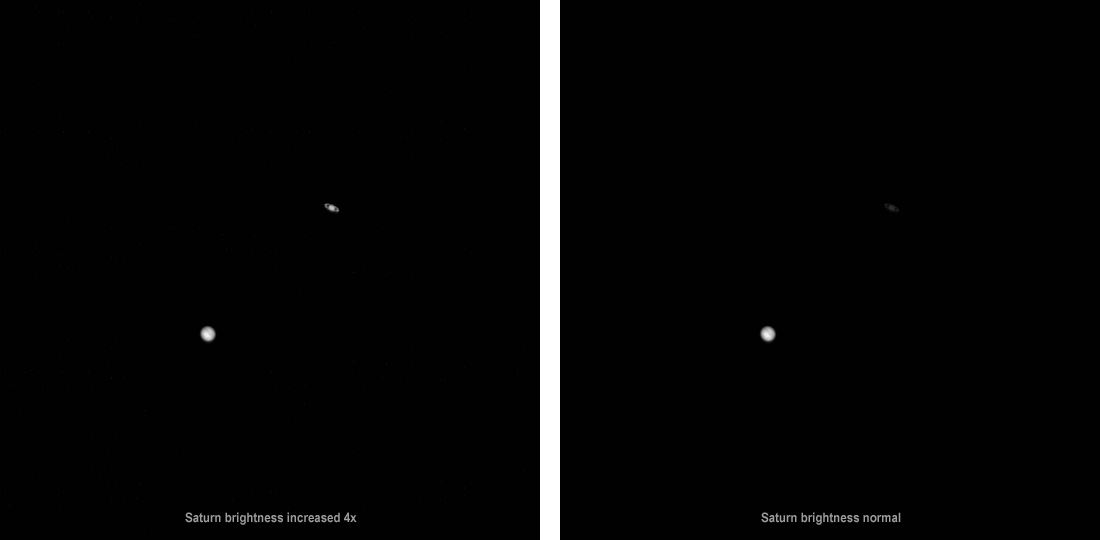
A planetary conjunction is when two objects in the sky appear close to each other from our viewpoint here on planet Earth. The easiest way to picture the Jupiter–Saturn conjunction is to imagine a straight line drawn between the Earth, Jupiter and Saturn. To the naked eye, despite the great distances between the two planets, they appear to nearly touch (or even to touch, depending on the blurriness of your vision). The LROC NAC captured this view just a few hours after the point of closest separation (0.1°) between the two giant planets. With the sharp focus of the NAC, you can see that the two planets are actually separated by about 10 Jupiter diameters.
The constant motion of the planets means that the moment that Jupiter and Saturn appear closest is fleeting; a day later (22 December) you can look up and see the two planets already appear farther apart. Due to the varying time that each planet takes to orbit the Sun, the alignment of Jupiter and Saturn only happens about every twenty years, and a conjunction this close is even rarer – the two planets will not appear this close (0.1° separation) again until March of 2080.

Related Featured Images
Two Faces of Mars (from the Moon)
Two-Planet Perspective from Lunar Orbit
2017 Eclipse as Seen from the Moon
Published by Mark Robinson on 22 December 2020